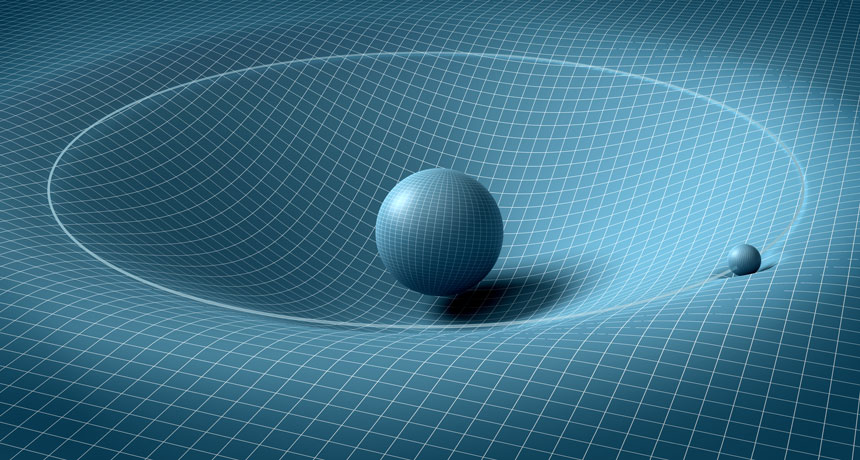Key Einstein principle survives quantum test
Equivalence of gravity, acceleration applies even for atoms in superposition of energy states

EINSTEIN ENDURES According to Einstein’s general theory of relativity, massive objects warp space (illustrated above), producing gravitational attraction. Scientists don’t understand how general relativity interfaces with quantum mechanics, but a pillar of general relativity, the equivalence principle, has withstood a new quantum test.
posteriori/Shutterstock